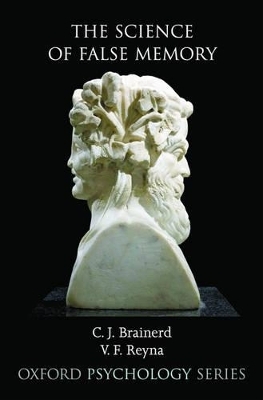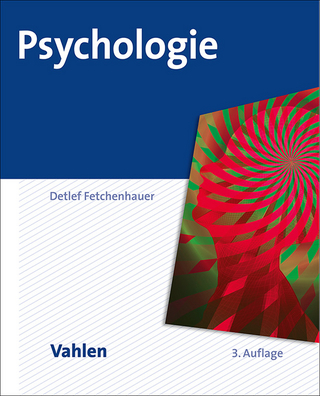
The Science of False Memory
Seiten
2005
Oxford University Press Inc (Verlag)
978-0-19-515405-4 (ISBN)
Oxford University Press Inc (Verlag)
978-0-19-515405-4 (ISBN)
Weaves together the common threads of the four major topics that comprise the core of false memory research: theories of false memory, adult experimental psychology of false memory, false memory in legal contexts, and false memory in psychotherapy. This book provides a picture of our understanding of human false memory.
A decade or so of intensive research on false memory has revealed much that is not well understood outside the circles of scientists who specialize in such research. However, this research has produced findings that have major implications for a number of fields that are central to human welfare, such as medicine and the law. This book has been written to make those findings accessible to a much wider audience than research specialists including child protective services workers, clinical psychologists, defense attorneys, elementary and secondary teachers, general medical practitioners, journalists, judges, nurses, police investigators, prosecutors, and psychiatrists. For that reason, the book assumes little or no background knowledge in the techniques of memory research. The volume begins with a consideration of progenitors of the modern science of false memory and notes the remarkable degree to which core themes of contemporary research were anticipated by historical figures such as Binet, Piaget, and Bartlett. It continues with an account of the varied methods that have been used to study false science of false memory, with the coverage revolving around three topics: theoretical ideas, both old and new, that have been used to explain false memory and to make predictions about it; research findings and predictions about age changes in false memory between early processes conceptions of false memory, is stressed. In Part II, attention shifts to the falsifiability of eyewitness identifications of suspects; false-memory reports in abuse crimes; and false memory in psychotherapy, including recovered memories of previous lives. Although Part II is concerned with applied research, we again emphasize the unifying trends are explored, with attention being focused on three expanding areas of false-memory research: mathematical models, aging effects, and cognitive neuroscience.
A decade or so of intensive research on false memory has revealed much that is not well understood outside the circles of scientists who specialize in such research. However, this research has produced findings that have major implications for a number of fields that are central to human welfare, such as medicine and the law. This book has been written to make those findings accessible to a much wider audience than research specialists including child protective services workers, clinical psychologists, defense attorneys, elementary and secondary teachers, general medical practitioners, journalists, judges, nurses, police investigators, prosecutors, and psychiatrists. For that reason, the book assumes little or no background knowledge in the techniques of memory research. The volume begins with a consideration of progenitors of the modern science of false memory and notes the remarkable degree to which core themes of contemporary research were anticipated by historical figures such as Binet, Piaget, and Bartlett. It continues with an account of the varied methods that have been used to study false science of false memory, with the coverage revolving around three topics: theoretical ideas, both old and new, that have been used to explain false memory and to make predictions about it; research findings and predictions about age changes in false memory between early processes conceptions of false memory, is stressed. In Part II, attention shifts to the falsifiability of eyewitness identifications of suspects; false-memory reports in abuse crimes; and false memory in psychotherapy, including recovered memories of previous lives. Although Part II is concerned with applied research, we again emphasize the unifying trends are explored, with attention being focused on three expanding areas of false-memory research: mathematical models, aging effects, and cognitive neuroscience.
PREFACE; PART I: BACKGROUND; PART II: THE BASIC SCIENCE OF FALSE MEMORY; PART III: THE APPLIED SCIENCE OF FALSE MEMORY; PART IV: FUTURE DIRECTIONS; REFERENCES
| Erscheint lt. Verlag | 26.5.2005 |
|---|---|
| Reihe/Serie | Oxford Psychology Series ; 38 |
| Zusatzinfo | 5 black and white photographs and numerous line figures |
| Verlagsort | New York |
| Sprache | englisch |
| Maße | 241 x 164 mm |
| Gewicht | 939 g |
| Themenwelt | Geisteswissenschaften ► Psychologie ► Allgemeine Psychologie |
| Geisteswissenschaften ► Psychologie ► Psychoanalyse / Tiefenpsychologie | |
| Geisteswissenschaften ► Psychologie ► Test in der Psychologie | |
| Geisteswissenschaften ► Psychologie ► Verhaltenstherapie | |
| Medizin / Pharmazie ► Medizinische Fachgebiete ► Psychiatrie / Psychotherapie | |
| ISBN-10 | 0-19-515405-3 / 0195154053 |
| ISBN-13 | 978-0-19-515405-4 / 9780195154054 |
| Zustand | Neuware |
| Informationen gemäß Produktsicherheitsverordnung (GPSR) | |
| Haben Sie eine Frage zum Produkt? |
Mehr entdecken
aus dem Bereich
aus dem Bereich
Techniken der Verhaltenstherapie
Buch (2024)
Julius Beltz GmbH & Co. KG (Verlag)
35,00 €


